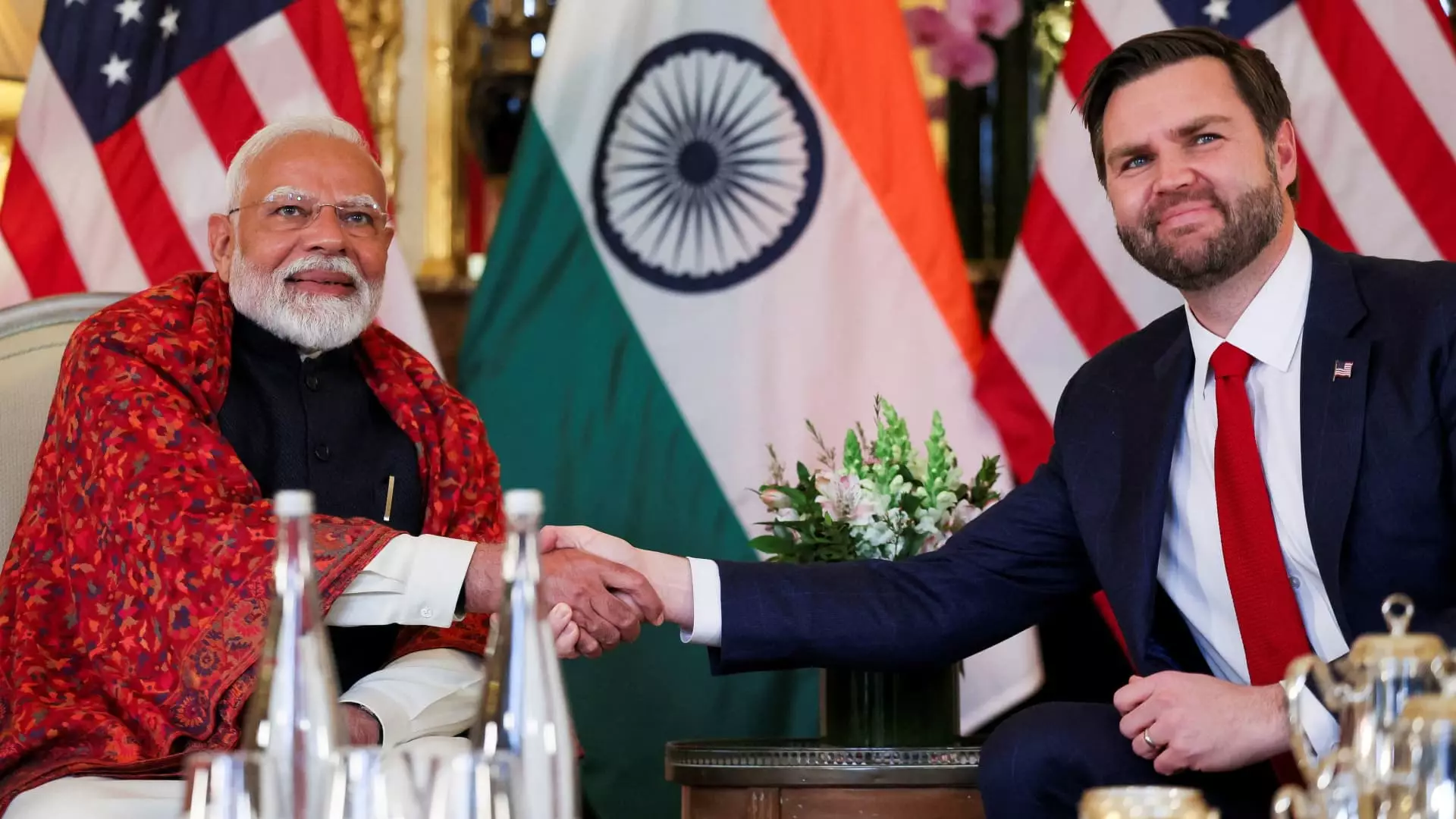As Vice President JD Vance embarks on a four-day odyssey to India, one can’t help but feel a mix of anticipation and skepticism regarding what this trip heralds for both nations. The diplomatic voyage, painted against the backdrop of escalating tensions between the United States and China, presents an opportunity for a recalibration of foreign relations that could either illuminate the path toward mutual prosperity or merely serve as a facade for deeper issues. The stakes are colossal; the landscape of international diplomacy is rarely as dynamic as it is right now, and the implications of this visit extend far beyond the boardroom discussions on trade.
Vance’s meeting with Indian Prime Minister Narendra Modi in New Delhi holds profound significance. In a world where economic alliances could mean the difference between prosperity and downfall, the expectations are set high. With India emerging as one of America’s largest trading partners—bilateral trade recently valued at $190 billion—this diplomatic engagement might suggest a bidding war over economic influence in a rapidly changing global system. However, it raises the question: will this be more than an exercise in public diplomacy, or are substantive agreements on the horizon?
Trade Tensions and Opportunities
While the prospect of a bilateral trade agreement could dramatically amplify economic ties, the reality remains clouded by historical complexities and current geopolitics. The ambitious target to double trade to $500 billion by 2030 is intriguing, yet it is fraught with potential pitfalls. For Indian policymakers, particularly Modi, the scenario is akin to walking a tightrope. Greater access for U.S. agricultural goods could revitalize the American farming sector, but it also has the potential to disrupt the livelihoods of millions of Indian farmers. India’s reluctance to capitulate to Washington’s demands reflects an understandable tension between the need for economic growth and the preservation of local industries.
Moreover, in the shadow of past tariff skirmishes, one may ponder whether both nations are genuinely committed to a harmonious trade climate or merely looking for temporary relief from mutual discomfort. The recent 26% tariffs that Trump slapped on India served as a stark reminder to New Delhi that the U.S. approach can shift as quickly as the winds of political might. To monetize promises of co-development without addressing these ingrained tensions feels like constructing castles in the air.
Geopolitical Chess: The Quad and Beyond
Vance’s visit also draws attention to the Quad alliance comprising the U.S., India, Japan, and Australia—a coalition aimed at counteracting China’s burgeoning influence. Unquestionably, India’s strategic positioning in the Indo-Pacific is vital for U.S. interests, especially as Beijing attempts to bolster its standing through aggressive economic strategies. Yet, one must question the sincerity of these partnerships. Are they born from a shared vision of stability, or are they merely the result of an opportunistic pivot to balance an intimidating adversary?
Furthermore, leading U.S. corporations, from Apple to Musk’s SpaceX, have shown keen interest in deepening relations with India, indicating that corporate commitment can sometimes eclipse governmental ambitions. However, this raises a troubling thought: is the expansion of American influence in India predicated on a genuine partnership, or is it simply opportunistic exploitation of favorable market conditions?
Cultural Nuances and Personal Connections
Beyond the contours of policy and economics, Vance’s personal connection to India through his wife Usha—an immigrant’s daughter—brings a poignant layer to this diplomatic endeavor. As he navigates the complexities of international relations, there’s an underlying narrative of personal ambition tied intricately to cultural heritage. This intertwining of identities may foster a deeper understanding and appreciation of India’s socio-economic fabric, which is often lost in the machinations of international politics.
Vance’s itinerary includes visits to culturally rich cities like Jaipur and Agra, suggesting a recognition of the importance of soft power in elevating bilateral ties. The sincerity of his engagements at these cultural sites could be a litmus test of his intentions. Are these merely public relations moves to enhance his image and that of the administration, or do they reflect a true desire to foster people-to-people connections that could ultimately facilitate stronger political and economic partnerships?
As Vance prepares to depart on this high-stakes trip, the questions loom large: Will this visit emerge as a pivotal moment in U.S.-India relations, or is it merely a beautiful yet fragile photograph in the ever-shifting gallery of international diplomacy? The world will be watching closely as the unfolding narrative promises to shape the economic and geopolitical future of not just two nations, but perhaps the entire globe.

